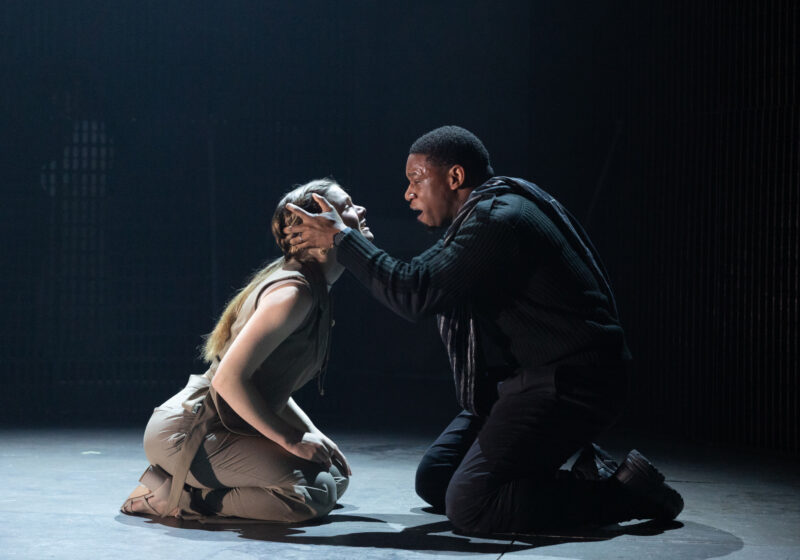I wasn’t quite sure what to expect for RPO’s upcoming operatic performance of Howard Hanson’s “Merry Mount.” As a singer, one of my main goals this semester was to see a live opera at Eastman, knowing that watching professional singers in action can be a great learning experience. Having prior knowledge that this performance was going to happen at Carnegie Hall in early May, I had high expectations from what turned out to be a pseudo-opera experience, featuring the combined efforts of the 200 person Eastman-Rochester Chorus, the 60-person Bach Children’s Choir, the Rochester Philharmonic Orchestra (RPO), and 17 soloists. There were no set pieces; the set information and character actions were noted through PowerPoint slides. The lyrics to each piece were projected as well, giving the audience an opportunity to let the music guide its interpretation of each scene.
The opera itself highlights the struggles of a seventeenth century Puritan colony preacher, Wrestling Bradford, whose main mission is to cleanse the New World of Satan. He is privately tormented by demons in his dreams, particularly the alluring demoness, Astroleth. An ongoing battle transpires between the Puritans and the Cavaliers, who are devoted to pleasure and established Merry Mount, a place the Puritans abhor. Bradford falls in love with Lady Marigold Sandys, who is already engaged to be married. Before the wedding ceremony occurs, Bradford orders the destruction of the Cavaliers and forces Marigold into the woods to try and convince her to cleanse her soul of sin. She refuses him, and Bradford is left to the inner torture of Satan, who eventually convinces him to sign the Devil’s Book. The plot concludes with the destruction of the Puritan settlement by Indians and Bradford’s denunciation of God. When he reveals a red mark on his forehead, signifying the Devil’s presence, the Puritans leave him. Bradford takes Marigold, who has fainted, with him into the church which has been set on fire in the final moments of the opera.
The religious theme of redemption from the snares of Satan was very powerfully represented through the scale and precision of the Eastman-Rochester Chorus, who often voiced the ideas of the Puritan colony and Bradford. The sheer momentum of the combined sound, which often felt like an overarching celestial presence, truly gave me chills. The early scenes featuring the Bach’s Children’s Choir, who were reciting the Ten Commandments, provided some slight comic relief amidst a very politically intense situation. Baritone Richard Zeller, who played Wrestling Bradford, gave a stunning vocal performance that not only demonstrated his flawless vocal technique but also the emotionally impactful character that gives in to sin. Bradford made the downward sloping journey captivating to witness. Lady Marigold Sandys, played by soprano Sara Jakubiak, provided added emotional fervor with her stubborn streak against Bradford’s wishes, a passion that penetrated her actions and her execution of each piece.
Although the theme of religious redemption and the cruel racial slurs against Native Americans could at times be overbearing, the combined musical efforts of the choir, orchestra, and soloists wove a vivid tapestry of the struggles of a man who wanted justice but could not conceive it. Although there wasn’t a set to physically demonstrate Bradford’s presence in the woods during his confrontation with Satan, when I closed my eyes and listened to Zeller’s vocal performance, I felt as if I were sitting right there – and in my view, that is an indication of great execution of a musical score.
Kibler is a member
of the class 2017.





